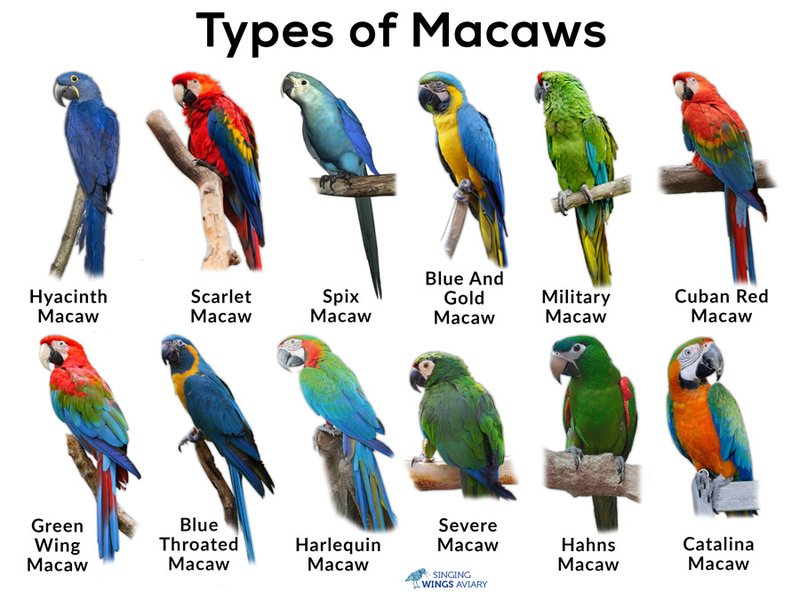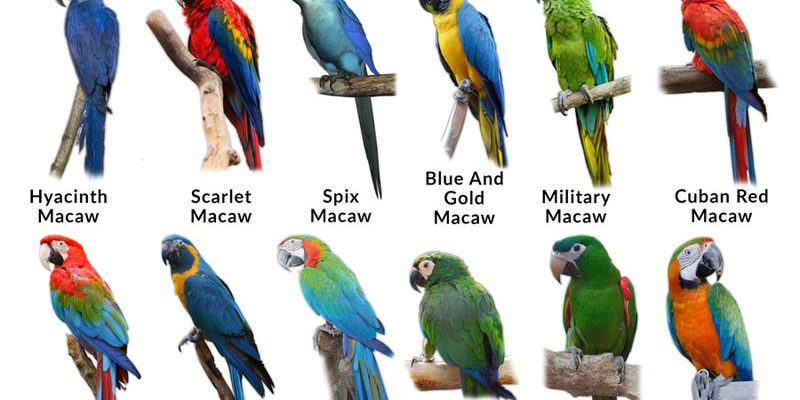
Understanding what sets the Scarlet Macaw apart from its feathered friends is like peeling back the layers of an onion. Each layer reveals unique characteristics, behaviors, and habitats. So, grab a cup of coffee, and let’s dive deep into the colorful world of the Scarlet Macaw and compare it to some of its closest relatives!
Physical Appearance: A Colorful Comparison
When you first see a Scarlet Macaw, their striking plumage steals the show. They have vivid red feathers covering their bodies, complemented by bright blue and yellow wings. It’s like looking at a walking rainbow! But how do they stack up against other birds in their family?
Take the Blue and Gold Macaw, for example. While still vibrant, it features a rich blue back and a golden-yellow underbelly. Both birds have long tails, but the Scarlet Macaw’s tail is more elongated and showcases a bright red color at the tips. On the other hand, the Military Macaw sports a more muted green coloration, with hints of red and blue on their faces—less flashy, but just as charming.
Here’s a quick visual breakdown:
- Scarlet Macaw: Bright red body, blue and yellow wings, elongated red tail.
- Blue and Gold Macaw: Blue back, golden-yellow underbelly, shorter tail.
- Military Macaw: Green body with red and blue accents, sturdier build.
This variation in color and appearance is not just for looks; it plays a role in their habitats and behaviors.
Habitat and Range: Where They Live
You might be wondering where you can find these beautiful birds. The Scarlet Macaw roams through the tropical rainforests of Central and South America. They thrive in areas like the Amazon basin, where their vibrant colors blend beautifully with the lush foliage. They prefer dense jungles, where they can find ample food and nesting sites.
In contrast, the Blue and Gold Macaw is more widespread and can adapt to a variety of habitats, including savannas and semi-open forests. You might find them in countries like Brazil and Bolivia, often in pairs or groups, reflecting their social nature. The Military Macaw, too, prefers tropical regions but can often be found in more arid environments, showcasing their adaptability.
Here’s a simple table to sum it all up:
| Bird Species | Habitat |
|---|---|
| Scarlet Macaw | Tropical rainforests of Central and South America |
| Blue and Gold Macaw | Open forests and savannas in Brazil and Bolivia |
| Military Macaw | Tropical areas and arid regions |
Diet: What They Eat
Let’s talk about food! The Scarlet Macaw loves to munch on a variety of fruits, nuts, and seeds. Their favorite treats include tropical fruits like mangoes and papayas. They have strong beaks designed to crack open hard nuts, making them little foodies of the forest.
Now, the Blue and Gold Macaw shares a similar diet but is particularly fond of seeds and nuts, especially palm nuts. Their beaks are just as powerful, allowing them to enjoy different textures and flavors. The Military Macaw, although often overlooked, also feasts on a variety of fruits, nuts, and even some flowers, adding a splash of color to their diet.
In general, their diets are like personal preferences. While they all share similar likes, they each have unique flavors that make them special.
Behavior: Social Butterflies of the Sky
Scarlet Macaws are known for their playful and social nature. They live in small to large flocks, and you can hear their loud, raucous calls echoing through the trees. It’s a true bird party! Their social behavior helps them bond and find mates.
When compared to the Blue and Gold Macaw, you’ll notice they share a similar social structure, but the Blue and Golds are often a bit more laid-back. They enjoy hanging out with their partners and can sometimes be found entertaining themselves with playful antics. The Military Macaw, while still social, tends to be a bit more reserved and maintains a smaller flock size.
Think of them as different personalities at a gathering. The Scarlet Macaw is the life of the party, the Blue and Gold Macaw is the charming entertainer, and the Military Macaw prefers a small circle of close friends.
Vocalizations: The Sounds of the Jungle
Have you ever heard a Macaw call? It’s something special! The Scarlet Macaw has a loud, distinctive squawk that can carry for miles. Their vocalizations aren’t just noise; they use them to communicate with their flock, warn of danger, or attract a mate.
The Blue and Gold Macaw has a softer but equally exciting repertoire. Their calls are often melodious, and they can mimic sounds quite well, which is pretty impressive! Meanwhile, the Military Macaw has a more gruff and throaty vocalization, which can be mistaken for a crow’s caw.
The diversity in their sounds adds an extraordinary layer to their personalities. Each species has a unique voice reflecting their character, turning the jungle into a symphony of colors and sounds.
Conservation Status: Challenges They Face
Sadly, many of these beautiful birds face challenges in the wild. The Scarlet Macaw is classified as near threatened, primarily due to habitat loss and illegal trapping for the pet trade. Efforts to conserve their natural habitats are crucial for their survival.
The Blue and Gold Macaw is also facing risks, but they’ve shown some resilience due to their adaptable nature. In contrast, the Military Macaw is critically endangered, which makes conservation efforts even more urgent. Protecting these species means rallying for their habitats and creating awareness around the threats they face.
Here’s the thing: every little action counts. Supporting conservation organizations or simply spreading the word can contribute to the survival of these incredible birds.
The differences between the Scarlet Macaw and similar bird species like the Blue and Gold Macaw and the Military Macaw highlight the incredible diversity within the parrot family. From their striking appearances and vibrant behaviors to their unique diets and vocalizations, each species brings something special to our world.
As we admire these creatures, let’s also remember the importance of protecting their habitats and ensuring their survival for future generations. Next time you hear a loud squawk overhead or see a flash of color, you’ll know a little more about these remarkable birds and what makes them unique. So, keep your eyes and ears open—adventure awaits in the vibrant skies above!

